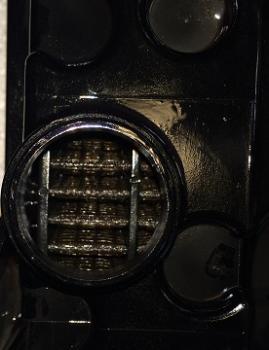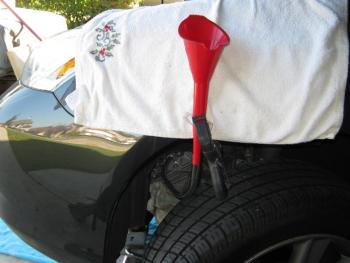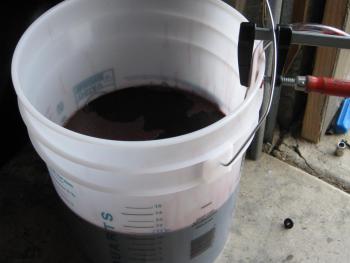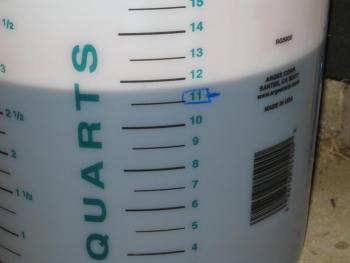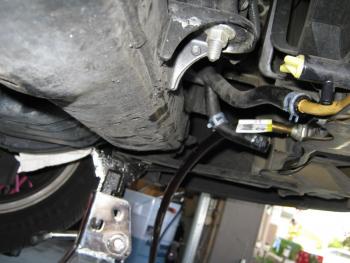
Chuy
Regular Member-
Posts
32 -
Joined
-
Last visited
Contact Methods
-
First Name
J
Profile Information
-
Gender
Male
-
Lexus Model
ES350
-
Lexus Year
2007
-
Location
California (CA)
Chuy's Achievements
-
A battery cable is an odd item to need replacing at 95K. Our 07 ES350 needed a new radiator by 110K; and the ADP pulley in the alternator froze at around 130K and fried the alternator. That was a PIA to replace. Haven't had any other issues. Car is now at 170K and running good.
-
2007 Es350 Nearing 180,000 Miles. What To Expect?
Chuy replied to LexusinSEMI's topic in 07 - 12 Lexus ES350
Will need spark plugs at 200K. You should be on 2nd ATF flush by then too. Recharge AC. By 150K my wife's 07 ES350 was on it's second radiator; do a pressure test and look for leaks; her's leaked from the upper seal. Her ES350 is also on its second alternator. The decoupler pulley failed; locked up and fried the alternator. This is something not covered in the manual: Gates recommends changing the pulley when replacing the serpentine belt. -
White smoke is common when starting a car especially on cooler days. The smoke will be thin and disappears quickly. This is the result of normal condensation buildup inside the exhaust system. However, thicker smoke is a problem; it's caused by the engine burning coolant. This can be the result of a blown head gasket, damaged cylinder head, or a cracked engine block. This type of smoke can be identified by a radiator reservoir losing coolant and a somewhat sweet smell at the tailpipe. Don't know about third party warranties.
-
If the battery has caps, check the fluid level. I check every oil change and have to top off every 2-3 oil changes. Always use distilled water. The one time the battery died on my wife' ES350 was due to a faulty alternator. Quick test is to measure voltage at battery terminals with a volt meter. At rest voltage should read 12.6 volts +/- .3. With engine running at idle, voltage should read 14.3 +/- .5 volts. Put a load on battery by turning on headlights and fan at high setting; voltage will drop a bit but should return to the voltage before the load, give or take .1 volts. If readings are low, before replacing alternator, check all connections and clean with wire brush if corroded.
-
The OEM filter and the replacement filter contain a paper element. I believe this traps more particulates than a metal mesh filter. For this reason alone, i would change out the filter more often than not. The pic I posted is of the backside of the filter - where the fluid comes out filtered; imagine how dirty it looks on the input side. Granted, i did the first flush at 100K and this may explain why my filter is so dirty, but knowing that the element is paper, I would recommend a filter replacement at 100K. The engine lift procedure is not really that bad. It was a PIA when I was down there and hit that wall, but now that I know what to do, lifting the engine will only add about ten minutes to the process.
-
For my second flush, at 155K miles, I decided to change out the filter. I was surprised no one has posted a how-to for the ES350. It was a PIA! Thankfully, I found a how-to in a Camry forum. The issue is a hard to get-to bolt. You have to loosen some motor mounts to lift up the engine. If there is interest I can post a how-to. The filter is made with a paper element and was black as night. The paper element appears to trap more crud than a wire mesh filter. It should probably be changed at 100K, or sooner. Also, for this flush, I used this little pump (Milescraft # 1313) which made flushing the tranny a breeze. Works with a drill and at the high setting, pumps four quarts in 30 seconds. $13 at Amazon. You will need some 1/2" ID tubing, 3/8" ID tubing, some hose clamps, and 1/2 to 3/8 reducer coupling to insert into the return hose at the radiator.
-
Yep. It ruptured while my wife was driving it home from work, back in March 2014. She lost enough oil to cause oil light to light up. Luckily, she was a mile from home. Took me a while to figure out the problem; the short rubber part where it burst is hard to see. I bought a replacement hose and had a local shop replace it for half the labor quote from the dealer. I tried replacing it myself but needed special tools to access the very-hard-to-get-to bolts. Car has been running normal since the repair. Will be submitting expenses to Toyota for reimbursement.
-
When you change out the wheels, do two simple tests to check the wheel bearings and CV struts. Hold the tire at 12 and 6 o'clock positions and firmly try and move the tire/wheel in and out. there should be no movement. Any movement would indicate bad wheel bearings or ball joints. Bad ball joints don't generally cause vibrations, so in this case, you'd be suspecting a bad bearing. (Some movement in the 3 and 9 o'clock is natural because the tie rods and/or steering will give a little.) The second test is to spin the tires off the ground. The wheel should rotate smoothly. Any binding or rough spots will point to a bad bearing and/or CV strut (95% of the time, it's the bearing). You will feel some drag from the brakes; so, spining the rotors without the brake pads will provide a more accurate assesment in this test. These are things the dealer should have checked but what have you got to lose in doing it? Damaging a wheel bearing is easy to do - any hard hit like driving over a pot hole or debris can damage the wheel bearings and/or bearing races. Another easy check are the back (inside or engine-side) of the brake rotors for debris that may have got caught in the cooling fins. Any mud or debris in there can throw off the balance. Good luck and let us know if and how this is resolved.
-
Same thing for the Valvoline MaxLife Dex/Merc ATF - not recommended for hybrids. Here is link to their spec sheet. http://www.valvoline.com/pdf/maxlife_atf.pdf I'm interested in that fill plug adapter K. Let us know if you find one. It might also fit my Tacoma. You could also cut a small piece of 5/8 or 3/8 tubing and squeeze in the fill hole to keep the line from pulling out. I kept holding it but I never felt it sliding out.
-
You shouldn't run H-rated tires if the manufacture calls for V-rated tires. Speed ratings are not just about the max speed. Higher speed rated tires have better handling and braking characteristics that are built into a car's design. http://blog.tirevan.com/2011/01/18/tire-speed-rating-its-not-just-about-how-fast-you-drive/ http://www.ehow.com/facts_7910006_can-speed-rated-tires-car.html It's not illegal but some tire installers may refuse installing lower speed-rated tires. "Why does your Camry have a “V” rated tire? Well it’s because the suspension installed in your vehicle will work much better with a higher speed rated tire. It’s also because those good brakes on the vehicle will benefit from the tires construction. So why should you be worried about installing the proper speed rating? Because if you would like your vehicle to handle the same, brake in about the same distance and be about as quiet as it was when you bought it, the speed rating will play a significant role in assuring this. You can always go up in speed rating and expect the normal changes in handling, noise and braking but you should never go down in speed rating. When it comes to emergency maneuvering, wouldn’t you want to have at least the minimum response from your vehicle that it was designed for?"
-
My favorite tire vendor is onlinetires.com . Same price you paid for the Nexxen's but minus $30 CA tax if you reside outside CA. I recently bought Uniroyal Tiger Paws's for my wife's ES350. I saved $45 shipping by picking them up at the warehouse. I reside in San Diego County and drove up when I took my daughter to Knott's Berry Farm. Warehouse was less than 10 miles away. I also picked up a set of tires for my Tacoma. I saved quite a bit of shipping $$ money that day!
-
Having just flushed the tranny fluid in my 07 Tacoma using a similar procedure, the most annoying part was the repeated fill-X-#-of quarts and start the engine to flush out the trany pan. I came up with a procedure to avoid this repetitive step (you will only need to turn on the engine once) by puchasing a 5-gallon bucket with measure marks at Home Depot. Buckets run about $6; look for them in the paint department. A few aisles over, I bought 3 feet of 5/8's ID clear tubing and 6 feet of 3/8's. Grab a funnel that will hold the 5/8's tubing (I trimmed a half-inch from an old one I had). Drain the trany pan and hand-tighten the drain plug. (I drained just over a quart.) Refill with 3 fresh quarts of WS. Set up your funnel and tubing. 5/8's tube from funnel to fill plug and 3/8's from radiator to bucket. Remove all caps from remaining quarts and have them within arms reach Have a helper turn on the engine and start filling trany when bucket starts filling up Keep a steady pace filling up one quart after the other. Have helper shift through the gears, pausing about 2 seconds in each gear Shut off engine when fluid in bucket reaches around 11.5 quarts. My biggest concern was the rate to pour in the fluid - I didn't want to overflow. Turns out I kept the right pace because just as the fluid mark hit 11 quarts on the bucket, the fluid started gurgling. When filling with fresh fluid, don't spend too much time getting the last drop out. When you are finish, you can go back and pour in the last drops from each quart. This is my wife's 07 ES350 and it had about 105K when I flushed it. They were easy miles. Fluid was dark with a slight hint of burnt aroma. Will change it around 170k next time, and will consider using Valvoline MaxLife Dex/Merc ATF (red cap) next time.
-
Try a tire rotation to see if the vibration patterns change. If the vibration patterns remain the same, then I would not focus too much on the wheels/tries. Anything in the suspension that rotates can cause vibrations. Some folks reported changing rotors stopped the vibrations. Also consider the CV axles and wheel bearings. Just cause the car is brand new does not mean those parts should not be looked at.
-
What Are You Guys Paying For An Oil/filter Change?
Chuy replied to 420benz's topic in 07 - 12 Lexus ES350
"The Mobil 1 Extended Performance limited warranty is valid for 15,000 miles or your vehicle’s OEM recommended oil change interval, whichever is longer." http://www.mobiloil....e_Warranty.aspx Additional requirements for Mobil 1 Extended Performance include: Oils must be put in service not later than five (5) years from the date of purchase; and an oil change must be completed every twelve (12) months. They do suggest to follow the recommended oil change if within the warranty period to "avoid a disruption in your vehicle warranty", but to do otherwise doesn't negate Mobil's warranty. -
Has anyone changed theirs? What brand are OEM? What did you get? Any issues installing them? Mine are overdue. I'm considering NGK Iridium IX.

